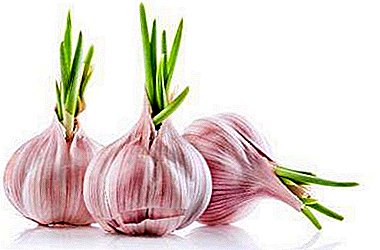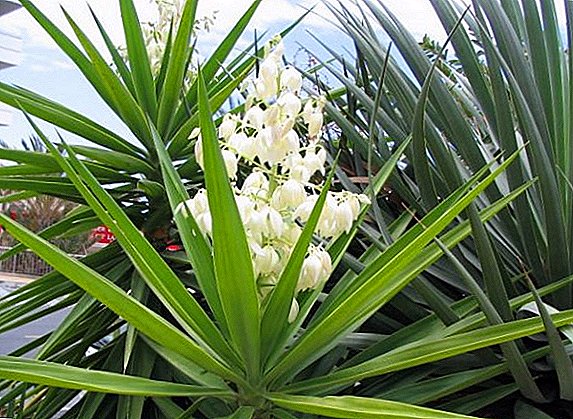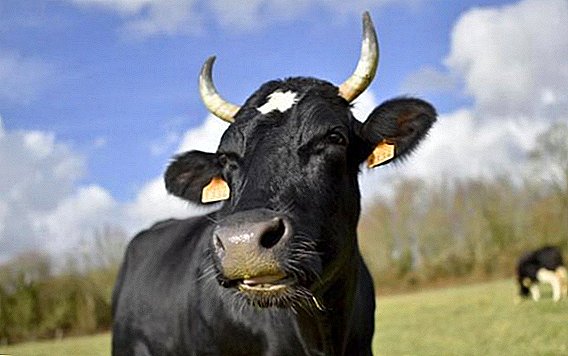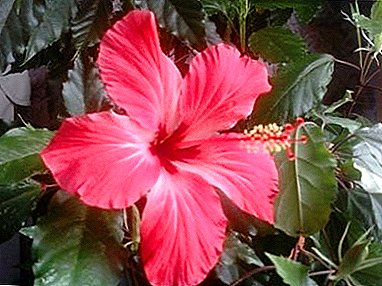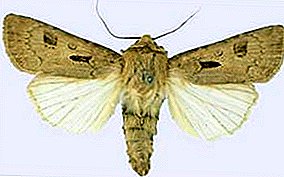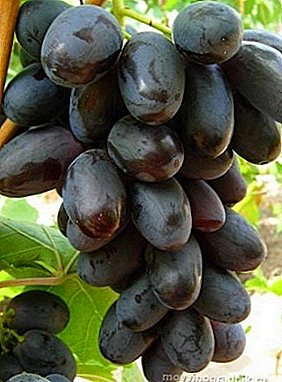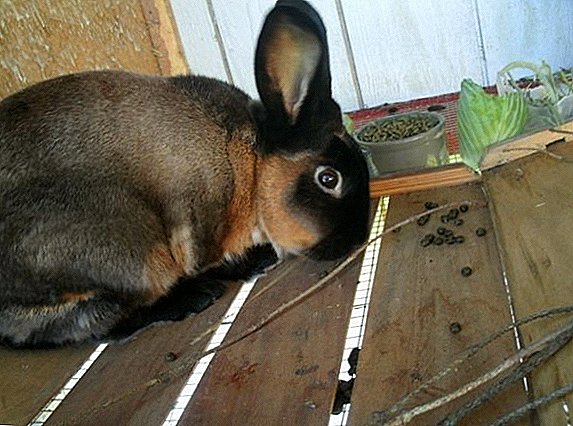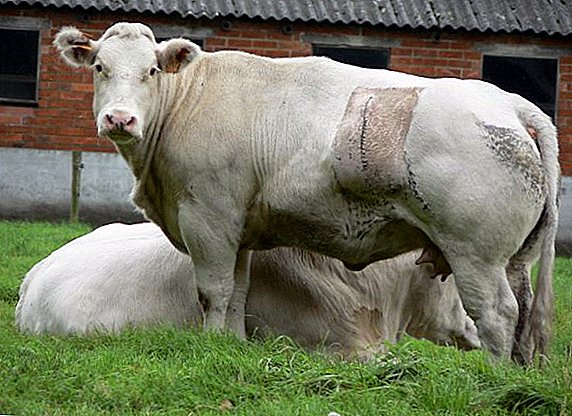 The Belgian cow is one of those animal representatives that attracts both admiring and reprehensible views. The breed was bred specifically for meat, so its appearance is rather unusual.
The Belgian cow is one of those animal representatives that attracts both admiring and reprehensible views. The breed was bred specifically for meat, so its appearance is rather unusual.
The cow has its own advantages and disadvantages, read about the characteristic differences of the breed below.
About breeding
The breed was bred in Belgium in about the first half of the 20th century. The skin of the animal is rather pale and thin. Sometimes the skin color can glow blue, so it is often called blue. To obtain this breed in several generations, a large number of individuals with the best fleshy indicators were selected.
Before you buy a cow, you need to familiarize yourself with the secrets of her choice. If you want to buy a dairy cow, we recommend to look at the TOP-7 of the best breeds.
The blue cow got its unique features because of the work of a special DNA segment, which is responsible for blocking the production of myostatin, a protein that stops the growth of muscle mass. Therefore, almost all body muscles with an impressive size are visible on the animal. For such a gigantic mass, these cows got the nickname of monsters. They are very often compared to bodybuilders, since almost all the relief muscles that appear even through the skin appear on the body. 
Did you know? Cows and bulls became ruminant animals in the process of evolution - they didn’t know how to run fast or hunt, they didn’t have sharp canines or claws, which allowed them to obtain food. Therefore, they invented a different way of feeding - Quickly grab the food without chewing it and run away. And dock it later, in a safe place.
Appearance and features of the breed
"Belgians" have a truly exotic and memorable appearance. The muscles on the body are very developed, but they appear especially strongly on the shoulders and the back. But even in spite of this sometimes frightening look, animals have a rather calm character and not so much weight as it may seem at first. The weight of a cow is usually at around 800 kilograms, and a bull is between 1,000 and 1,300 kilograms.
The best breeds of cows meat direction.
Height - average, about 150 centimeters. But the color can be completely different: from white, cream and pink, to black and brown shades. The predominant color of individuals is still white with a bluish tint.
To the peculiarities of the breed and the absence of wool. It is simply not necessary, since breeding places are usually warm countries. It also contributes to more intense skin color. 
Character
The big plus for which representatives of the breed are valued is character. It is almost "golden" - the animals are very calm and friendly. The bulls also have a balanced temper, for which they have won the love of many farmers and breeders. The gentle, calm nature of this giant is considered one of the main advantages of the breed.
Learn more about the peculiarities of breeding brown Latvian, red steppe, Simmental, Holstein, Shorthorn, Kazakh white-headed, Dutch, Yaroslavl, Hereford and Aberdeen Angus cows.
Getting offspring
Due to the nature of the organism, in particular the large mass of muscles, the lumen of the pelvis in cows is narrower. Normal physiological calving in such conditions is very difficult. Solve the problem by insemination of cows of other breeds - giving birth is easier, but the calf loses some of its mass, up to about 8-10%, not more.
Important! Belgian blue cows in 50% of cases make a cesarean section. This is a normal practice of European farms, since natural calving is practically impossible.The first calf cow can make already in 3 years. Pregnancy is slightly shorter than that of other breeds - a bull appears in 285 days, and a chick in about 281 days. Musculature begins to become prominent already at 5 weeks of growth. The male weighs from 40 to 70 kilograms at birth, and the female - 35-60 kilograms.

Meat quality
Works on selection and breeding allowed not only to increase the amount of meat obtained from a cow - up to 80% from one individual (and this is only pure meat), but also to improve its taste. In addition to taste, it is also famous for its softness, richness, low concentration of fat. The meat of cows of this breed is also considered dietary, according to some of its characteristics it resembles chicken. Harmful fats in it contain much less (almost three times), than in other grades of beef. In meat, the perfect balance of proteins, fats and carbohydrates, which makes it even more valuable product.
Did you know? Earlier in Europe, cows carried all the responsibility before the law, on a par with people. Any proceedings against them were conducted in accordance with all the rules and requirements, but the most severe and severe punishment that was applied to animals was excommunication.
How much milk does it give
From one cow you can get from 2.5 to 5 thousand liters of milk for 200 days of lactation and feeding a young calf. The percentage of its fat content will be at least 3.5%. Together with productive indicators and the amount of meat, this makes the individual in demand in farms of various types.
How does cold endure
Bred cows and bulls in the territories of Germany, France, some areas of the United States and Belgium. All these countries have a predominantly warm climate, so animals are very dependent on it. Cold is not well tolerated, individuals not only do not breed, but do not survive in cold climates. Therefore, breeding in Russia, Ukraine, Belarus and other CIS countries is very difficult. 
Is it possible to breed in our conditions
Taking into account quality indicators, the benefits of growing, breeding and slaughtering individuals of the breed is obvious. But this is true only for the countries of Europe, in the territories of the CIS countries they are not popular due to the special appearance and exactingness of the conditions.
For animals, a warm heated barn is required, which reduces almost all the advantages of breeding. In addition, the material for fertilization can be ordered directly from Europe, but it will be very expensive, plus the cost of transportation and documents. Sometimes breed breed in the southern territories of the country. In the diet require the presence of straw, hay and different varieties of feed. It is necessary to include vegetables in the diet, especially carrots and beets.
Important! Feeding animals must be made anyway. Special supplements with high calcium content - pledge of life of the individual, as the bones can break under excess body weight.Also important point of maintenance is grazing animals on pastures near the house or farm - because of the large body weight, they can not tolerate long transitions or travel. In addition, grazing on distant pastures can cause problems with the skeletal system, sprains and fractures.
Advantages and disadvantages
The main advantages of the breed, of course, are:
- large meat yield and impressive body weight;
- calm and good temper;
- rapid development and gaining muscle mass;
- gestation period is shorter than conventional breeds;
- high-quality and high milk yield during feeding.
Find out why it is important to trim cows with hoofs.
 Even despite the excellent performance, there are a number of shortcomings that affect not only the content, but also the breeding of individuals. The cons of the Belgian blue:
Even despite the excellent performance, there are a number of shortcomings that affect not only the content, but also the breeding of individuals. The cons of the Belgian blue:
- high demands on the conditions of nutrition and content;
- bone problems;
- problems with calving and offspring.


